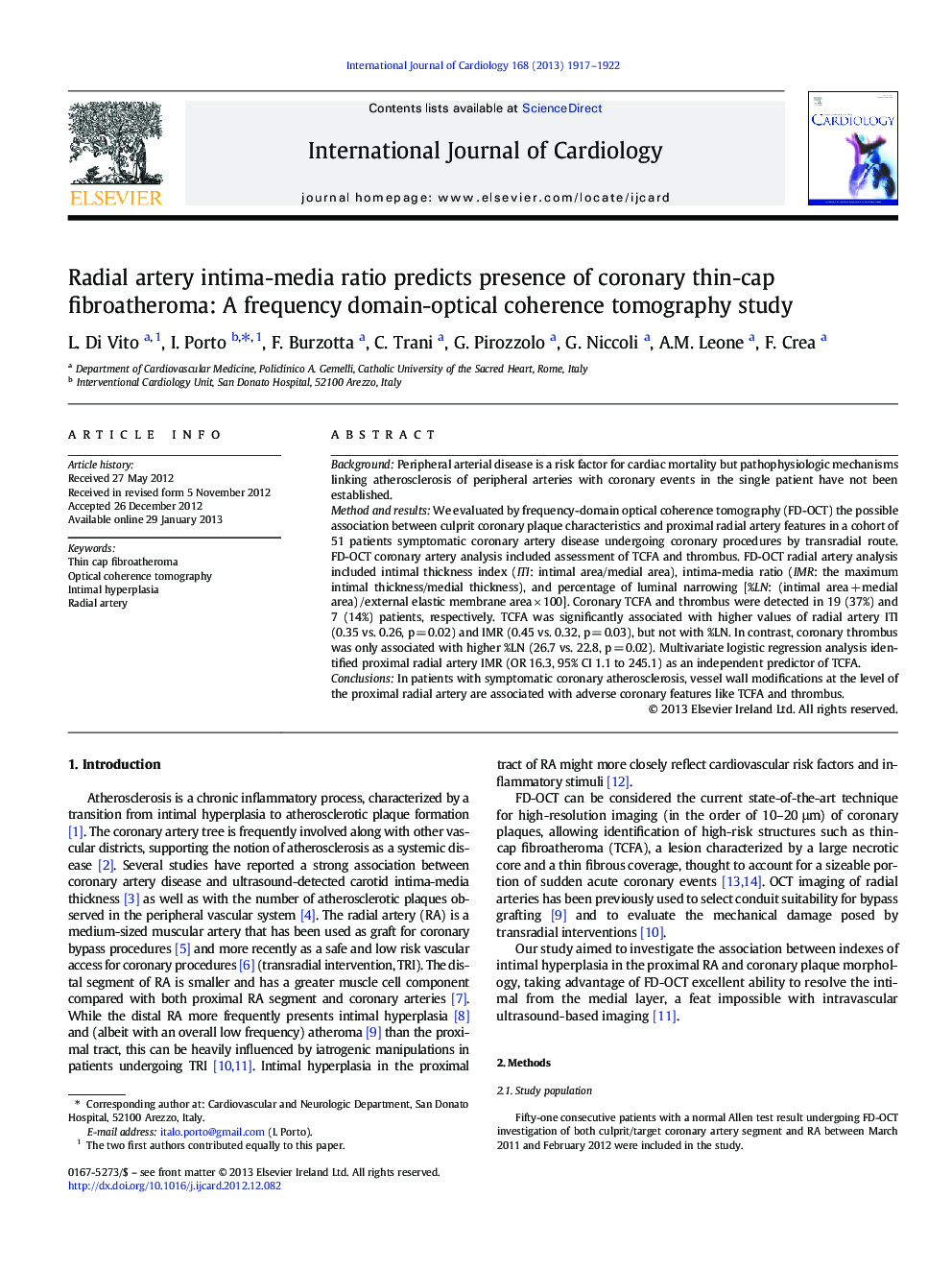| Article ID | Journal | Published Year | Pages | File Type |
|---|---|---|---|---|
| 5976136 | International Journal of Cardiology | 2013 | 6 Pages |
BackgroundPeripheral arterial disease is a risk factor for cardiac mortality but pathophysiologic mechanisms linking atherosclerosis of peripheral arteries with coronary events in the single patient have not been established.Method and resultsWe evaluated by frequency-domain optical coherence tomography (FD-OCT) the possible association between culprit coronary plaque characteristics and proximal radial artery features in a cohort of 51 patients symptomatic coronary artery disease undergoing coronary procedures by transradial route. FD-OCT coronary artery analysis included assessment of TCFA and thrombus. FD-OCT radial artery analysis included intimal thickness index (ITI: intimal area/medial area), intima-media ratio (IMR: the maximum intimal thickness/medial thickness), and percentage of luminal narrowing [%LN: (intimal area + medial area) / external elastic membrane area Ã 100]. Coronary TCFA and thrombus were detected in 19 (37%) and 7 (14%) patients, respectively. TCFA was significantly associated with higher values of radial artery ITI (0.35 vs. 0.26, p = 0.02) and IMR (0.45 vs. 0.32, p = 0.03), but not with %LN. In contrast, coronary thrombus was only associated with higher %LN (26.7 vs. 22.8, p = 0.02). Multivariate logistic regression analysis identified proximal radial artery IMR (OR 16.3, 95% CI 1.1 to 245.1) as an independent predictor of TCFA.ConclusionsIn patients with symptomatic coronary atherosclerosis, vessel wall modifications at the level of the proximal radial artery are associated with adverse coronary features like TCFA and thrombus.
